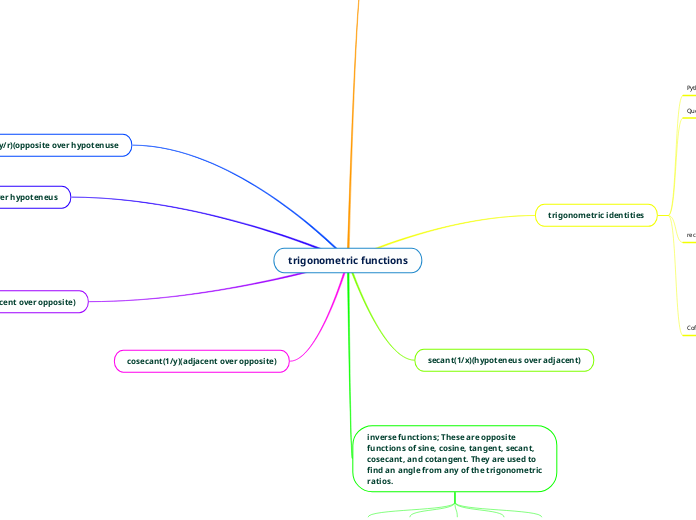
Pythagorean
this identity states that for any angle
sine squared + cosine squared equals 1.
Ex; sinx=3/5 and x is in the first quadrant,
we can use pythagorean identity to find cost.
cosine(x)squared = sine squared times
cosine squared = 1 minus (3/5) squared
which simplifies to plus/minus cos(x) 4/5
(x is in the first quadrant so it must be positive)
practical uses inculde navigation
between two points on the earth's surface
or calculating the speed of circular movement.
Quotient
reciprocal
this identity states that for any angle where sine (theta)
doesn't equal to 0 then the following are true;
csc = 1/sine(theta)
sec = 1/cos(theta)
cot = 1/tan(theta) = cos(theta)/sin(theta)
An example would would sine(x) being 6/5 we could use the
statement that csc(x) = 1/sine(x) times csc(x) = 1/(6/5)
equals(x) 5/6.
practical uses involve finding a hypoteneus
or to find the tangent
without an adjacent side to work off of.
Cofunction
this identity is used heavily to figure out complimentary angles, the principle is;
sin(pie/2-theta) = cos(theta)
cos(pie/2-theta) = sin(theta)
for example, plug in any integer as the end value for
sine times cosine(pie/2-x) to solve.
heavily used in measuring distances in astronomy along with satellite navigation systems.
arccosine
arctangent
arc cotangent
arc secant
arcsine